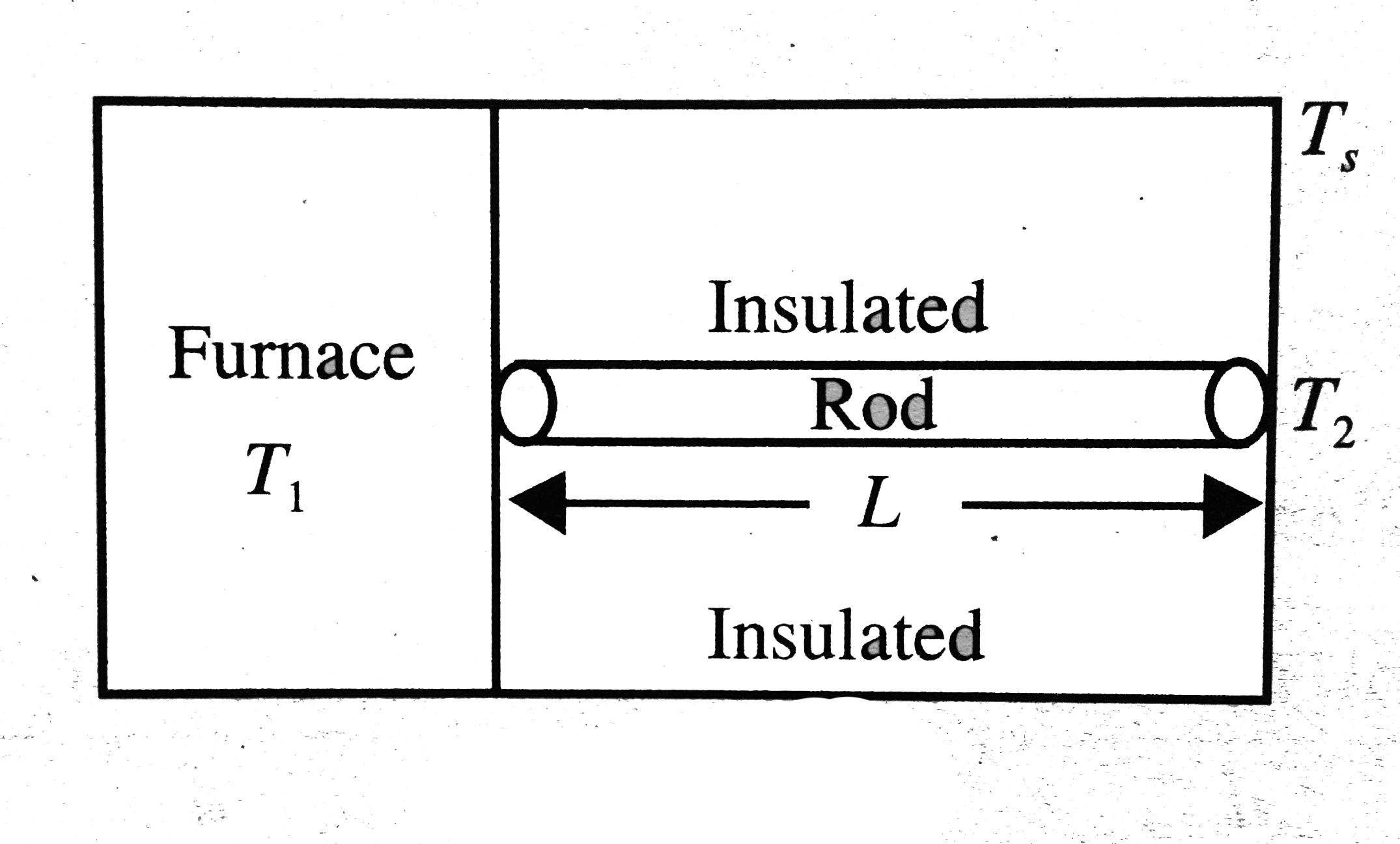Consider a cube of side at temperature . Let it be heated to a temperature when the length becomes show that .
We have
But
[Neglecting terms with
.
Topper's Solved these Questions
- HEAT AND TEMPERATURE BOOK - CENGAGE PHYSICSCHAPTER - HEAT AND TEMPERATURE EXERCISE - MANDATORY EXERCISE (Exercise Set I)
33 Videos
- HEAT AND TEMPERATURE BOOK - CENGAGE PHYSICSCHAPTER - HEAT AND TEMPERATURE EXERCISE - MANDATORY EXERCISE (Exercise Set II)
36 Videos
- HEAT AND MECHANICAL ENERGYBOOK - CENGAGE PHYSICSCHAPTER - HEAT AND MECHANICAL ENERGYEXERCISE - Olympiad and NTSE Level Exercises
7 Videos
- LASERSBOOK - CENGAGE PHYSICSCHAPTER - LASERSEXERCISE - OLYMPIAD AND NTSE LEVEL EXERCISES
1 Videos
Similar Questions
One end of a rod of length L and crosssectional area A is kept in a furnace at temperature T1. The other end of the rod is kept at a temperature T2. The thermal conductivity of the matrieal of the rod is K and emissivity of the rod is e. It is gives that T!=Ts+ΔT, where ΔT<<Ts,Ts is the temperature of the surroundings. If ΔT∝(T1−T2) find the proportional constant, consider that heat is lost only by rediation at the end where the temperature of the rod is T1.

View SolutionFind the dimensions of
(a) the specific heat capacity c,
(b) the coefficient of linear expansion α and
(c) the gas constant R.
Some of the equations these quantities are Q=mc(T2−T1)lt=l0[1+α(T2−T1)] and PV=nRT. (Where Q=heat enegry , m=mass, T1&T2= temperatures, l1 =length at temperature t∘C, l0= length at temperature 0∘C, P=Pressure, v = volume, n = mole)
View Solution
Knowledge Check
In following isothermal graphs A, B and C at temperatures T1,T2 and T3, the correct order of temperatures will be :
 AT1>T2>T3BT1>T3>T2CT3>T2>T1DT3>T2>T2
AT1>T2>T3BT1>T3>T2CT3>T2>T1DT3>T2>T2The co-efficient of thermal expansion of a rod is temperature dependent and is given by the formula α=aT, where a is a positive constant at T in∘C. if the length of the rod is l at temperature 0∘C, then the temperature at which the length will be 2l is
A√ln2αB√ln4αC1αD2αA calorimeter of mass m contains an equal mass of water in it. The temperature of the water and clorimeter is t2.A block of ice of mass m and temperature t3<0∘C is gently dropped into the calorimeter. Let C1,C2andC3 be the specific heats of calorimeter, water and ice respectively and L be the latent heat of ice.
The whole mixture in the calorimeter becomes water ifA(C1+C2)t2−C3t3+L>0B(C1+C2)t2+C3t3+L>0C(C1+C2)t2−C3t3−L>0D(C1+C2)t2+C3t3−L>0
The co-efficient of thermal expansion of a rod is temperature dependent and is given by the formula α=aT, where a is a positive constant at T in∘C. if the length of the rod is l at temperature 0∘C, then the temperature at which the length will be 2l is
View SolutionA cylinder of cross-section area. A has two pistons of negligible mass separated by distances l loaded with spring of negligible mass. An ideal gas at temperature T1 is in the cylinder where the springs are relaxed. When the gas is heated by some means its temperature becomes T2 and the springs get compressed by l2 each . if P0 is atmospheric pressure and spring constant k=2P0Al, then find the ratio of T2 and T1 .
_S01_124_Q01.png)
View SolutionA cylinder of cross-section area. A has two pistons of negligible mass separated by distances l loaded with spring of negligible mass. An ideal gas at temperature T1 is in the cylinder where the springs are relaxed. When the gas is heated by some means its temperature becomes T2 and the springs get compressed by l2 each . if P0 is atmospheric pressure and spring constant k=2P0Al, then find the ratio of T2 and T1 .
_S01_124_Q01.png)
View SolutionA calorimeter of mass m contains an equal mass of water in it. The temperature of the water and clorimeter is t2.A block of ice of mass m and temperature t3<0∘C is gently dropped into the calorimeter. Let C1,C2andC3 be the specific heats of calorimeter, water and ice respectively and L be the latent heat of ice.
The whole maxture in the calorimeter becomes ice if
View SolutionThe specific heat of a substance at temperature at t∘c is s=at2+bt+c. Calculate the amount of heat required to raise the temperature of m g of the substance from 0∘C to t∘0C
View Solution
